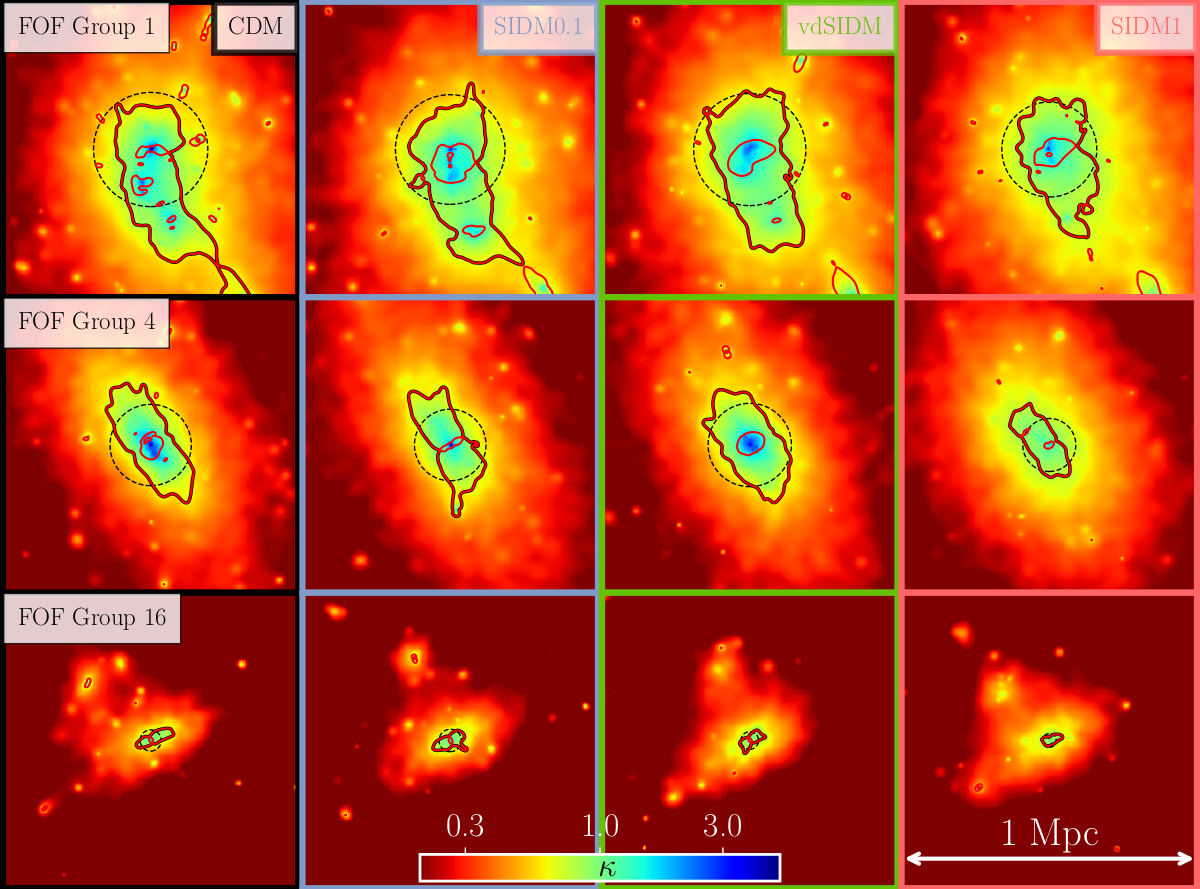CEA News, November 2018
Observable tests of self-interacting dark matter in galaxy clusters: cosmological simulations with SIDM and baryons
The identity of dark matter is one of the major unsolved problems in physics. Dark matter's name comes from the fact that it does not emit any light, meaning that we can't see it directly with our telescopes. However, we can observe the gravitational effect that it has on things we can see, with measurements ranging from the rotation of tiny dwarf galaxies to the distribution of galaxies on the largest scales implying there is about five times as much dark matter as ordinary matter.

In order to learn more about the nature of dark matter particles, Durham astronomers built model universes inside of a supercomputer, with the dark matter having different properties in each of these simulated universes. On top of the dark matter, these simulations included the complex physics of ordinary matter associated with the evolution of galaxies, including the formation of stars and supermassive black holes.
Changing the properties of the dark matter altered the way in which it was distributed, but did not have much effect on the distribution of the stars and gas which are more easily seen. This suggested that the best way to distinguish between these different types of dark matter is using a technique known as gravitational lensing. This technique makes use of the fact that the path of light is bent by gravity. If we look at a lump of dark (or regular) matter, which has a galaxy behind it, the light from that background galaxy will be distorted by the gravity from the intervening lump of matter (known as a `lens'). In extreme cases there can even be multiple distorted images of the same background galaxy, as the light from the galaxy is bent around different sides of the lens.
As more massive objects produce stronger gravitational lensing, the Durham astronomers focussed on the most massive objects in the Universe, galaxy clusters. They generated the gravitational lensing signals of galaxy clusters in each of their simulated universes, with maps of three different simulated galaxy clusters (the rows) with four different dark matter models (the columns) shown in the image above. By comparing them with the gravitational lensing produced by real galaxy clusters they ruled out some models for dark matter. While we still do not know what dark matter is, we know a bit more about what it is not.
